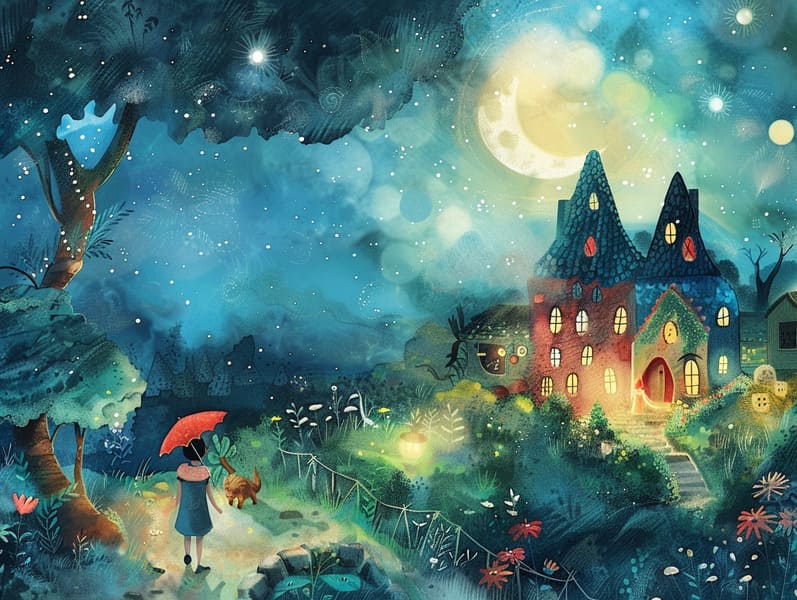
Grimm's fairy tales have enduring presence. These narratives have been conveyed from one generation to the next ages before they were ever published. They arose from a variety of backgrounds, including European traditions. They were initially passed along among adults, often carrying themes and messages concerning the societal norms and beliefs of the time.
The Grimm brothers, the two Grimm brothers, were among the first to compile many of these beloved tales. Their compilation, "Grimm's Folk Tales," included narratives like "Cinderella," "The Bread Crumb Trail," and "Schneewittchen," which have since become essentials in the world of timeless fairy tales. Similarly, Hans Christian Andersen's fantastical stories, such as "The Mermaid's Tale," and "The Duckling's Story," have floated into hearts worldwide, solidifying their place in the pantheon of treasured fairy tales.
Despite their historical roots, traditional fairy tales remain as relevant as ever, especially as bedtime stories for kids. These delightful tales are now available in various formats, including richly illustrated books, whimsical animations, and online storybooks.
Their persistent charm can be credited to several whimsical characteristics:
Important Morals: Ancient fairy tales often offer important moral lessons. Stories like "The Story of the Boy Who Cried Wolf" teach the virtue of sincerity, while "The Tortoise and the Hare" exemplify the qualities of steadfastness and meekness. These stories offer little ones clear distinctions between good and bad, forming their moral compass in a mild yet deep way.
Sympathy and Perception: Fairy tales frequently present individuals facing problems and hurdles, inspiring children to comprehend with their struggles and support their triumphs. For instance, "The Story of Beauty and the Beast" conveys the merit of valuing inner qualities to realize the true nature of a person, promoting perception and appreciation.
Cultural Insights: Many old fairy tales are rich in the cultural contexts from which they blossomed. Learning from these fairy tales can provide intriguing perspectives into different traditions, nurturing a sense of global appreciation and appreciation.
Creativity and Fantasy: The enchanted elements in fairy tales—enchanted lands—invigorate children’s dreams. These fairy tales bring readers to fantasy realms, promoting imaginative ideas and a sense of excitement that persists a lifetime.
Traditional fairy tales are not only alluring but also informative. They work as alluring tools in advancing various cognitive and affective skills in kids. When fairy tales are told out loud, they promote linguistic abilities by offering new language and detailed sentence structures. This practice also enhances auditory skills and attention span, as children hang on every word, anxious to see what happens next.
Furthermore, exploring the themes and characters of timeless fairy tales can foster analytical skills and thought processes. Children are taught to detect patterns, forecast, and get cause and effect. These explorations also benefit children say their thoughts and feelings, promoting their emotional intelligence.
In today’s information age, the accessibility awesome site of online fairy tales has made these tales more obtainable than ever. Web platforms and applications offer vast collections of ancient fairy tales that can be perused or listened on anytime, anywhere. Fairy tales spoken are particularly popular, giving an interactive method for young readers to appreciate these whimsical stories. Read-aloud stories and spoken videos guide characters and settings to life, often supplemented by enchanting soundtracks and soundtracks that augment the storytelling experience.
The timeless allure of classic fairy tales lies in their ability to change to modern days while keeping their core messages. Contemporary renditions of these narratives often spotlight more multicultural characters and modern settings, making them pertinent to today’s audience. However, the main ideas of fortitude, sympathy, and righteousness remain unchanged, continuing to affect kids of all ages.
Classic fairy tales also offer a sense of reassurance and understanding. They highlight a well-arranged narrative with a apparent beginning, middle, and end, often wrapping up with the solving of conflicts and the triumph of right over wrong. This reliability can be solacing for the young, extending a sense of sturdiness in an dynamic world.
Timeless fairy tales continue to captivate and edify new generations, maintaining their grace and significance in modern society. As bedtime stories for kids, they serve a perfect blend of fantasy and learning, sustaining moral values, empathy, and creativity. The availability of digital storybooks and the likability of fairy tales recited promise that these ancient stories remain accessible to new generations.
By perpetuating and circulating these fairy tales, we continue to honor the rich tapestry of cultural heritage and cultural heritage. Whether you are delving into a artistically illustrated book, exploring a virtual collection, or listening via an voice book, the wonder of famous fairy tales is always within reach. These tales convey of the immortal magic of stories and its ability to draw us together across generations and cultures.
No matter if you are browsing a beautifully illustrated book, browsing a electronic library, or listening via an sound book, the loveliness of bedtime fairy tales is always within reach.
These fairy tales remind us of the undying ability of tales and its ability to link us across time and space, creating a bond that charms and informs alike.
Comments on “Delving into the Background of Popular Fairy Tales and Their Timeless Charm.”